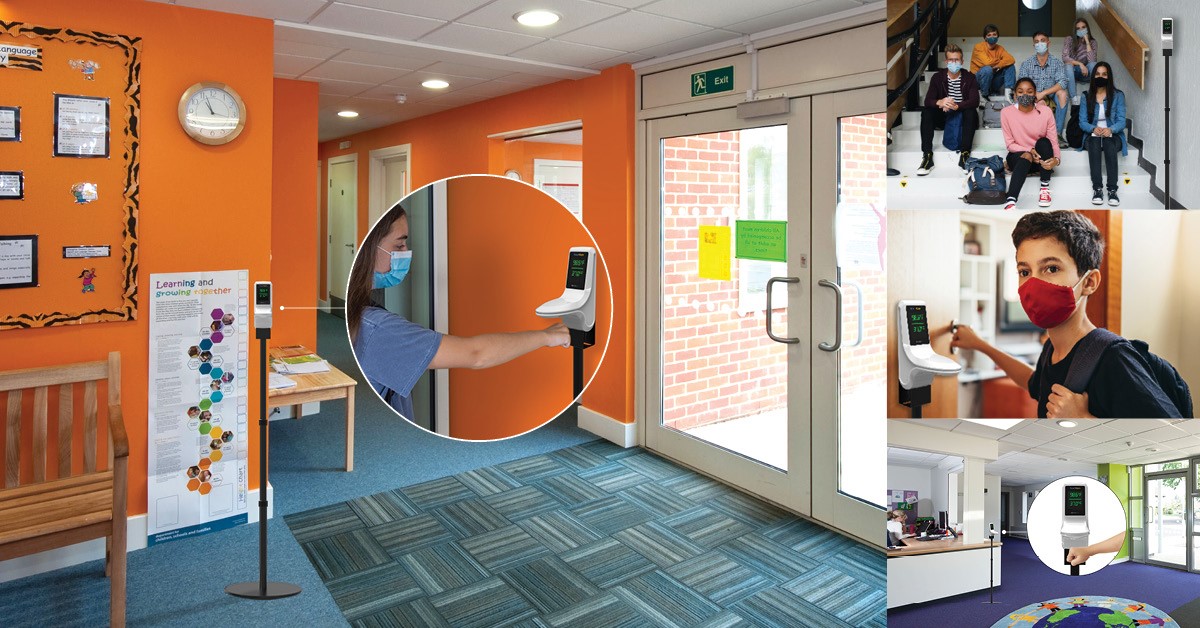With the continuation of the pandemic, organizations are looking for viable solutions that will allow them to get their hospitals, workforce, manufacturing and educational environments back to some sense of normal.
The Centers for Disease Control and Prevention has recommended that medical facilities, businesses, manufacturing and schools not only protect their medical staff/patients, students/employees but also monitor employee health regularly. Legal experts assert that entities that fail to maintain minimum standards, including health monitoring and temperature screening, could later be subject to liability or workman’s compensation issues if employees, teachers, students, and visitors contract the virus.
The Science of Fist-Forward Temperature Monitoring
The wrist and fist areas are ideal for infrared temperature scanning because the arterial blood flow is close to the skin. Generally, this area does not have scanning complications of other IR technologies like the forehead where perspiration, hair or make-up can interfere. University studies report the fist/wrist as one of the most reliable areas for temperature scanning.
Many people are familiar with infrared (IR) skin temperature devices used to monitor forehead skin temperature, but due to different heights, heavy perspiration of the forehead area, hair, make-up, and other facial coverings, the readings can be compromised and often require secondary scans. However, the fist is highly regarded as the best method to correlate with mean body temperature (MBT), which is used to measure fever.
Another reason the fist/wrist area is considered as an optimal temperature monitoring is that people can easily manipulate their arm/hand and scan themselves. In contrast, people of different heights would require multiple scanners to achieve the same results with a forehead scanner. Longer range thermal infrared imaging systems are also available on the market. Still, they are expensive, and a high-resolution camera is necessary to direct the image to the correct facial areas.
How the Wrist-Forward Method Works
The fist-forward method’s advanced infrared temperature monitoring system offers much more than temperature scanning. Specific models provide reporting software acting as your future expert witness and provide compliance reports to help you avoid liability issues. The system also easily integrates with auxiliary devices such as automatic doors, gates and employee attendance systems. For example, when a red light is indicated, the software allows for the door to automatically lock, preventing that person from entering the building.
New York Leads the Way in Temperature Scanning
The New York Department of Health has recently mandated temperature checks for all employees at hospitals in the state. Additionally, they have a beta program to allow visitors back into hospitals, but they also must have their temperature checked.
Although the mandate does not specify fist-forward technology, if the hospital chooses to adopt this type of product, it would then tie into a self-serve kiosk where the visitor enters information. They place their hand/fist under the scanner, and the temperature report would go to a kiosk with a go/no go for validation. If they get a “green light,” the visitor pass is printed.
This approach would mean no visitors are allowed entry without a temperature check.
Conrad Bessemer is CEO/managing partner of MachineSense and Novatec. For more information on fist-forward technology, visit www.feverwarn.com.













